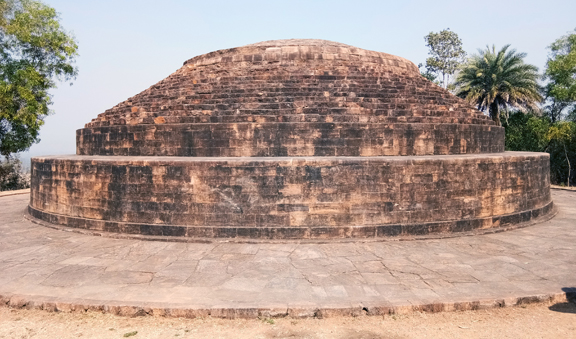Chandikhole: Even as the Archeological Survey of India (ASI) claims it has spent Rs 95, 45,160 lakh towards beautification of ancient Buddhist site Lallitgiri near here over last 11 years, not a single garden has been created to draw tourists to the place, a report said.
The revelation came to the fore following a reply available under the Right to Information Act.
The ASI claimed it spent money on beautification and upkeep of the Buddhist site. The Lalitgiri sarpanch Sanjukta Singh has raised objections to such claims. Singh wanted to know on what heads the ASI has spent the money as a single park has not been created at Lallitgiri.
She alleged the claim is being made to hoodwink people and demanded a proper probe to unravel the truth. Locals suspect that the fund meant for upkeep and beautification of the site has been usurped.
Lalitagiri is a major Buddhist site in the state comprising major stupas, ‘esoteric’ Buddha images, and monasteries. The site has Buddha’s relics and was known for practice of Tantric Buddhism at this site.
Lalitagiri is part of the ‘Diamond Triangle’ together with the Ratnagiri and Udayagiri, the two other sites in the district. Tourists, researchers as well as international tour operators visit this site in large numbers to see Buddhism and its practices that flourished in past.
The Archeological Survey of India on behalf of the Centre works towards the upkeep and beautification of these sites and other sites assigned to it in the state.
Reports said the ancient Buddhist site is situated in Mahanga block of Cuttack district close to Chandikhole. The site acquired prominence after the skeletal remains of Lord Buddha were recovered from this site.
Later, on the demand of residents, the ASI constructed a bullet proof museum and stored the skeletal remains of Lord Buddha.
The site’s importance can be gauged from the fact that Chinese scholar and traveler Hiuen Tsang also visited Lalitgiri when he visited India. This finds mention in his book Pu-Si-KoLi.
According to historians, the site came up between first century BC and second century AD. The ASI discovered the skeletal remains of Lord Buddha packed in a small casket. The skeletal remains have now been kept in three small containers inside the bullet proof museum.
The excavation also found remnants of four monasteries and several idols of the Buddhist era. Historians are of the opinion that the ancient sculptures belong to the period between 6th century and 11th century. The site is visited by researchers from within and outside of the country but the ASI has not been able to establish a park to attract them during their visit.
When contacted, Arun Kumar Mallick, superintendent of ASI, refused to comment on the issue, saying he is new to the place.
PNN






































